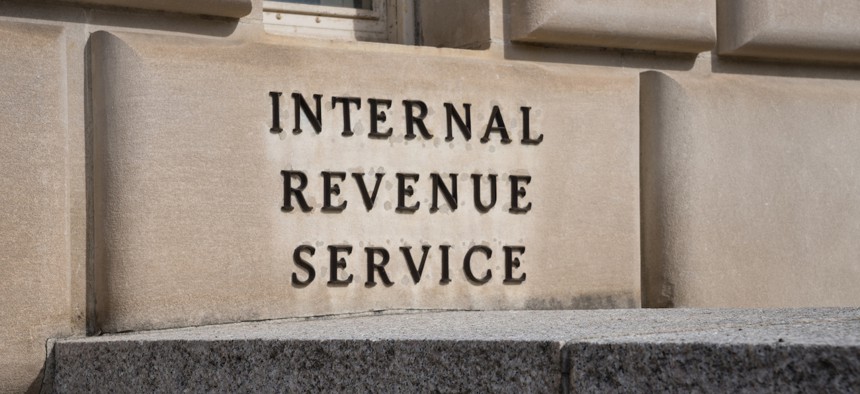
More than 43,000 employees left IRS in the period between fiscal years 2019 and 2022. HABesen/Getty Images
IRS needs to significantly ramp up use of bonus pay incentives, IG says
To meet its ambitious staffing goals, watchdog says IRS must start doling out cash.
The Internal Revenue Service has begun implementing a years-long hiring surge that is expected to bring on a net gain of tens of thousands of new staff, but the agency is essentially not using financial incentives intended to boost recruiting and retention.
Setting aside a brief period when IRS paid bonuses to essential staff that had to quickly return to work during the COVID-19 pandemic, the agency has used bonuses aimed at hiring or maintaining employees in hard-to-fill, non-IT positions in just 31 instances between fiscal years 2019 and 2022. It offered the incentives in just less than 1,500 cases overall in that period, according to a review by the IRS inspector general, though the vast majority went to employees who had to return to their offices in the spring of 2020. The IG called on IRS to significantly expand its use of the bonuses in the years to come as it ramps up its hiring campaign.
More than 43,000 employees left IRS in the period between fiscal years 2019 and 2022. It ended fiscal 2022 with an 8.5% attrition rate. About 11% of IRS revenue agents left the agency that year, a position the IG specifically cited as requiring retention bonuses.
IRS now has $60 billion to spend over the next decade as part of the Inflation Reduction Act—on top of its annual appropriations—much of which will go toward hiring. The agency plans to net more than 25,000 employees, the IG said, with 12,000 of those going toward backfilling positions lost due to attrition. The agency has said it will bring on a total of 10,000 employees in fiscal 2023 and another 20,000 in fiscal 2024, a plan that remains in effect despite President Biden and congressional Republicans agreeing during debt ceiling negotiations to slash the funding IRS will receive as part of the IRA by $20 billion.
Recruitment and relocation incentives allow IRS to make payments to certain applicants and hires in difficult-to-fill positions, ranging from 25% of base pay for lower-paid employees to 15% for higher-paid employees. Retention bonuses go to employees deemed essential to the mission and who are likely to leave without the payment. IRS also maintains a “critical position pay authority,” but it has used it for just six positions since its inception in 1990. The agency piloted an effort to implement the authority in 2019, but the process took three years to get approval so officials decided to retire the initiative.
The IG told IRS it should conduct skill gap assessments to identify positions requiring special payments, which the IRS said it will do going forward and took steps to implement in May of 2022. The agency also agreed to formalize its approach to ensuring all strategies for filling mission-critical positions, including special pay, are utilized. IRS said it will create an agency-wide strategy for using financial incentives for mission-critical roles.
“IRS needs to expand its use of special payment incentives to increase efforts to hire or retain mission-critical personnel and reduce related personnel shortages,” the IG said.
IRS will be getting some help as it readies itself for its unprecedented surge in hiring. It has signed two contracts to assist with recruiting and background investigations, while the Office of Personnel Management has provided expedited hiring authority for up to 10,000 Taxpayer Service and Enforcement positions annually through 2027. Still, the agency faces many hurdles as it attempts to meet its ambitious plan.
The agency also has extensive plans to boost hiring without using financial incentives. To reach its hiring objectives, IRS vowed to redesign its hiring and onboarding processes to make them faster and better able to attract more people. That will include publishing rolling job announcements, recruiting in more places and communities, reviewing position descriptions and qualification requirements and digitizing candidate assessments. It will market the “value proposition” of working at IRS and use analytics to target potential candidates, including by opening up “pre-hire skills development bootcamps.” The agency said it will improve its physical office space and develop new work models to allow for more flexible work hours and geographic locations. IRS noted it has more than 100 personnel systems that it will, by 2025, consolidate into one platform “to streamline the management of employee data.”
Despite those efforts, the IG said the agency will have to impact employees’ bottom line to reach its goals.
“As part of its expanded hiring efforts, the use of special payment incentives could assist the IRS to fill mission-critical positions and reduce the challenges of hiring and retaining employees,” the watchdog said.







